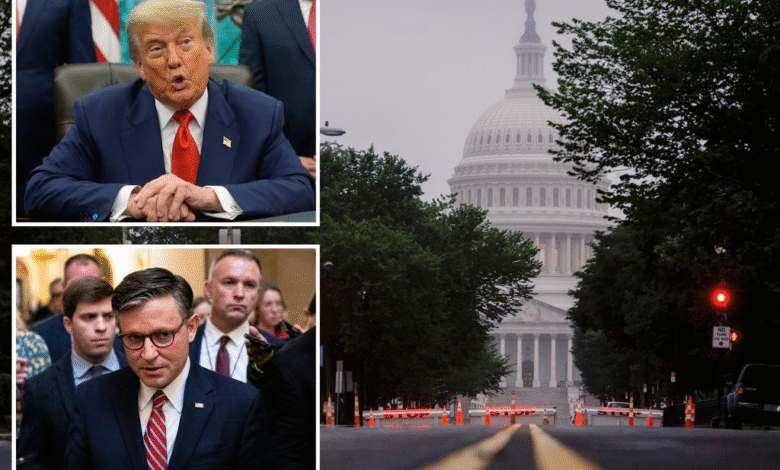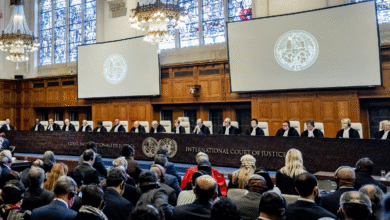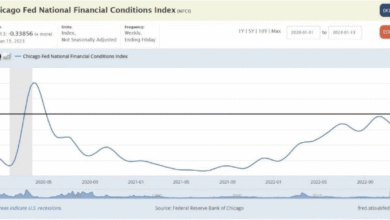One Big Beautiful Bill Act: Analysis of Income Disparity

The “One Big Beautiful Bill Act” has made headlines in recent political discourse as Republicans in the Senate push for its passage, aiming to deliver a major overhaul of existing fiscal policies by July 4. A damning report from the Yale Budget Lab calls attention to how this GOP legislation could significantly exacerbate income disparity, primarily benefiting wealthier households while imposing severe hardships on low-income individuals. According to the Yale analysis, the poorest earners might experience an income decline of up to 2.9%—roughly $700 a year—contrasting starkly with the projected $5,700 gain for the richest 20%. These alarming statistics raise questions about the true impact of the “One Big Beautiful Bill Act” on America’s financial landscape, particularly in terms of fiscal responsibility and support for the vulnerable. As debates continue, it becomes clear that the implications of this Senate Republicans’ bill extend beyond mere economic numbers, sparking critical conversations about the future of social welfare and the well-being of lower-income households.
In the wake of recent legislative proposals, the so-called “One Big Beautiful Bill Act” has emerged as a contentious element in the ongoing discussions surrounding fiscal reform. This proposed legislation from Senate Republicans raises significant concerns regarding its effects on financial equity, particularly amidst growing income inequality in the United States. The latest analysis from the Yale Budget Lab indicates that low-income families might bear the brunt of this bill, which appears to favor economic advancements for higher-income brackets at the expense of the underprivileged. As recent evaluations highlight, the repercussions of this political maneuvering could lead to an exacerbated divide in wealth distribution, prompting necessary discussions on the efficacy of such GOP initiatives. Given the current economic climate, the real-world implications of this act could have long-lasting repercussions on the most vulnerable populations in society.
Overview of the One Big Beautiful Bill Act
The “One Big Beautiful Bill Act” introduced by Senate Republicans is touted as a cornerstone of their economic strategy. However, a thorough analysis from the Yale Budget Lab raises critical concerns about its implications for income equality in the United States. The report discusses how the acting legislation is primarily designed to bolster the financial standing of wealthier Americans, possibly at the expense of low-income households. With projected benefits favoring the top earners, the bill aims to reach President Trump’s desk by July 4, showcasing a prioritization of affluent taxpayers over marginalized communities.
The Yale Budget Lab’s examination predicts that the bottom 20% of income earners could witness an alarming income reduction of approximately 2.9%, translating to an annual loss of about $700. In stark contrast, individuals within the top 20% might enjoy a considerable income boost of around 2.2%, or $5,700 per year. This stark juxtaposition highlights an income disparity that underscores the potential regressive nature of the proposed legislation, prompting a deeper investigation into its long-term societal effects.
Impact on Low-Income Households
The implications of the “One Big Beautiful Bill Act” are particularly troubling for low-income households, as detailed in the Yale Budget Lab report. Key provisions of the bill suggest significant cuts to essential support systems like Medicaid and the Supplemental Nutrition Assistance Program (SNAP), both of which serve as lifelines for vulnerable populations. These changes pose a risk of exacerbating financial hardships for families already on the brink of economic instability, aligning with many policy experts’ warnings regarding the long-term effects of such cuts.
Additionally, while some temporary tax cuts may be introduced that seem beneficial to low-income earners, these measures are expected to be overshadowed by the broader implications of slashing vital program funding. As a result, the alleged short-term gains may not suffice to counteract the adverse long-term effects, further entrenching income inequality. The relentless push for this GOP legislation, if enacted, could reshape America’s financial landscape irreparably, prioritizing the interests of a wealthy minority.
Analysis of Economic Disparities
The findings from the Yale Budget Lab highlight alarming economic disparities exacerbated by the “One Big Beautiful Bill Act.” The analysis reveals that the legislative framework will likely favor the affluent, generating concerns about income disparity widening further. According to the data, while the wealthiest households could see substantial increases in their income, the bottom tiers could face severe financial setbacks, drawing attention to the perpetual cycle of poverty and limited upward mobility for low-income families.
Moreover, an alarming projection from the Congressional Budget Office indicates that the bottom 10% of households might incur an annual loss of approximately $1,600, raising fundamental questions about the GOP’s commitment to fostering an equitable economy. The economic divide illustrated by the Yale Budget Lab’s analysis implies that as lower-income households struggle, higher earners will continue to amass wealth unequally, thus threatening the social fabric of the nation.
Critique of GOP Legislation Effects
The critique surrounding the potential effects of GOP legislation like the “One Big Beautiful Bill Act” emerges as a significant point of contention in the current political landscape. By favoring tax cuts for wealthier individuals, Senate Republicans risk neglecting the grassroots issues faced by lower-income households that depend on critical funding for healthcare and nutrition. Critics argue that such legislation is regressive, inadvertently intensifying the financial struggles of those it ostensibly aims to support.
As discussions around the bill continue, analysts warn of the broader ramifications these policies could have on economic stability. Critics from various socio-economic backgrounds voice concerns that the bill misaligns with principles of equity and justice, instead reinforcing the structures that perpetuate income disparity. This disproportionate impact on low-income households raises ethical questions regarding the direction of U.S. fiscal policy and its ramifications for future generations.
Future Implications of the Bill
The potential future implications of the “One Big Beautiful Bill Act” appear dire, particularly in terms of national debt. With projections indicating that the national debt could surpass $4 trillion by 2034 if this legislation goes through, there are mounting concerns regarding fiscal sustainability. Experts critique the prioritization of tax cuts over equitable investments in education and social programs that could foster long-term economic growth for all Americans.
Moreover, as low-income households are disproportionately affected, the consequences may reverberate through various sectors of society, from healthcare to education, leading to a more polarized community. The anticipated economic framework thus not only raises immediate concerns regarding poverty but also threatens to undermine the fundamental principles of social mobility and community cooperation in the long run.
Debate on Financial Equity
The debate surrounding financial equity remains a central theme in discussions about the “One Big Beautiful Bill Act.” As interpretations of justice in policy-making shift, the potential for this legislation to widen the gap in financial equity has ignited passionate arguments across political lines. Many community leaders and economists stress that fairness should be at the heart of financial regulations and reforms, urging lawmakers to rethink strategies that bolster wealthy interests while neglecting the most vulnerable populations.
In this high-stakes environment, activists advocate for policies that prioritize ordinary citizens’ needs rather than affluent beneficiaries’ wealth. By drawing on analysis from organizations like the Yale Budget Lab, there’s a concerted push for transparency and fairness in legislation, calling for measures that support broader access to resources and opportunities.
Role of Analysis in Policy Formation
The analytical role of institutions like the Yale Budget Lab is crucial in shaping public discourse around policies such as the “One Big Beautiful Bill Act.” Detailed economic analysis serves to inform lawmakers and the public alike about the potential outcomes of proposed legislation. Through rigorous assessments, these reports assist in exposing the nuanced effects policies may have on various income levels, especially low-income households that are often overlooked in legislative discussions.
Their findings provide an evidence-based framework for understanding the repercussions of anticipated income shifts, thereby equipping advocates with the tools needed to challenge regressive legislative initiatives. This data-driven approach paves the way for more equitable policymaking, advocating for a legislative environment where considerations for all socioeconomic classes are prioritized.
Public Sentiment and Legislative Response
Public sentiment plays a pivotal role in influencing legislative response to bills like the “One Big Beautiful Bill Act.” As the Yale Budget Lab report circulates, public awareness about the financial implications of the bill has surged, prompting citizens to voice their concerns. Activism fueled by awareness leads to larger conversations on how policies affect everyday lives, especially for the financially vulnerable.
As constituents reach out to their representatives expressing fears of increased income disparity, the pressure mounts on lawmakers to reconsider their support for the legislation. A well-informed public can drive change, pushing for revisions that prioritize the welfare of lower-income households and challenge the entrenched interests often served by the current legislative framework.
Economic Projections and Consequences
The economic projections surrounding the “One Big Beautiful Bill Act” are dire, indicating a heavily skewed benefit distribution towards richer households while inflicting economic strain on those at the bottom level of the income spectrum. As reported, households within the bottom 10% of earners could face devastating losses, thus challenging the narrative that such legislation offers broad-based benefits. This raises important questions about the fiscal approach embraced by Senate Republicans and its sustainability.
If these projections hold true, the consequences could spell a troubling future for the country, facing a paradox where wealth inequality amplifies, and low-income families continue to struggle for basic financial security. Policymakers are thus urged to reflect on the long-term effects their legislative choices have on the societal fabric of America.
Frequently Asked Questions
What is the One Big Beautiful Bill Act and who does it impact most?
The One Big Beautiful Bill Act, proposed by Senate Republicans, aims to implement significant financial changes in the U.S. economy. According to the Yale Budget Lab analysis, the Act primarily impacts low-income households negatively, with the bottom 20% of earners projected to experience a 2.9% income decrease, while wealthier Americans could see a substantial income increase.
How does the One Big Beautiful Bill Act affect income disparity in the U.S.?
The One Big Beautiful Bill Act exacerbates income disparity, as highlighted by the Yale Budget Lab’s findings. The analysis indicates that the wealthiest households could gain approximately $5,700 annually, while low-income individuals may lose around $700. This shift illustrates a resource transfer from lower to higher earners, increasing the economic divide.
What are the key provisions in the One Big Beautiful Bill Act concerning assistance programs?
Key provisions of the One Big Beautiful Bill Act involve deep cuts to essential assistance programs, including Medicaid and SNAP. These changes are particularly detrimental to low-income Americans, as they rely on these programs for financial support, overshadowing any temporary tax relief they might receive from the bill.
What long-term economic impacts could the One Big Beautiful Bill Act have?
The One Big Beautiful Bill Act could lead to detrimental long-term economic impacts, particularly for low-income households. The Yale Budget Lab report indicates that these households could face annual losses of about $1,600. Additionally, the projected increase in national debt associated with the bill could exceed $4 trillion by 2034, raising concerns about the overall economic health of the country.
What does the Yale Budget Lab report say about the One Big Beautiful Bill Act’s benefits and drawbacks?
The Yale Budget Lab report highlights that while the One Big Beautiful Bill Act may offer some tax cuts to low-income earners, these temporary benefits are significantly outweighed by more substantial cuts to vital support programs like Medicaid and SNAP, ultimately resulting in net losses for low-income households.
How does the One Big Beautiful Bill Act align with GOP legislative strategies?
The One Big Beautiful Bill Act aligns with GOP legislative strategies that often favor wealthier Americans while imposing burdens on low-income households. Experts indicate that this approach could be regressive, as evidenced by the Yale Budget Lab’s analysis, which points to growing income inequality as a result of this legislation.
When is the One Big Beautiful Bill Act expected to reach President Trump’s desk?
The One Big Beautiful Bill Act is designed to reach President Trump’s desk by July 4, 2025. This timeline is critical for examining the ongoing discussions and potential changes in the bill before its anticipated approval.
| Key Points | Details |
|---|---|
| Impact on Incomes | The bottom 20% of earners would see a 2.9% decrease in income (approx. $700), while the top 20% would benefit from a 2.2% increase (approx. $5,700). |
| Cuts to Essential Programs | Deep cuts to Medicaid and SNAP are proposed, which are crucial for low-income Americans. Tax cuts for low earners may provide temporary relief but are unlikely to offset these cuts. |
| Projected Financial Impact | The bottom 10% of households may lose about $1,600 annually, while wealthier households could gain significant benefits. |
| Potential National Debt Increase | Projected national debt could exceed $4 trillion by 2034 due to the proposed legislation’s financial implications. |
| Overall Economic Impact | The analysis reveals a regressive effect of the GOP’s legislative strategy, raising concerns about the overall economic landscape and sustainability for lower-income Americans. |
Summary
The One Big Beautiful Bill Act has stirred significant debate as new findings unveil its potential ramifications on American households. The Yale Budget Lab’s report underscores the disproportionately adverse effects on low-income earners, suggesting that the legislation would primarily serve the wealthiest while undermining support systems crucial for the vulnerable. Today’s analysis not only highlights the urgent need for equitable policies but also raises flags about the sustainability of the American economic future in the face of such concerning legislative moves.




